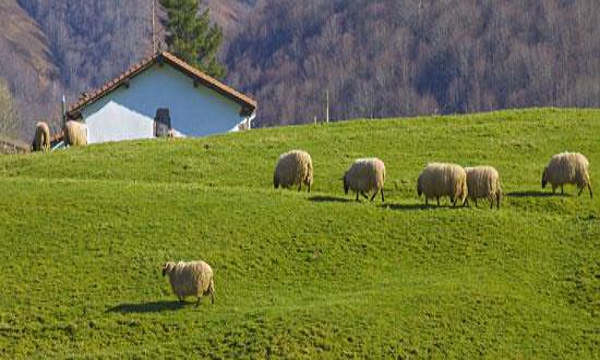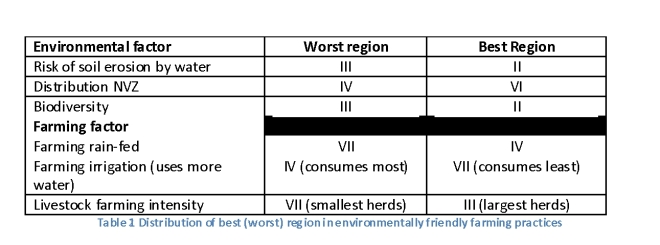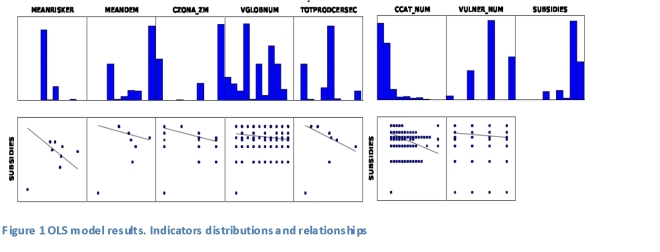Sustainable supply chain management practices have recently been developed. The aim is to integrate environmental concerns into organizations and reduce unintended negative environmental consequences triggered by production and consumption processes. In parallel, the Circular Economy (CE) pushes the frontiers of environmental sustainability. It emphasizes the idea of transforming products, enabling workable relationships between ecological systems and economic growth. In this context, to guarantee success, the exchange of information across the supply chain is essential. Evaluating the renewable energy industry in Spain clarifies the extent to which its underlying information framework enables the sustainability of energy production in the country.
Open Data (OD) indicators, provide the means to assess its maturity on openness and information availability, key requirements of a successful CE for sustainable flow identification across the energy supply chain. Furthermore, the OD Initiative ensures correct management of information as society transitions to this new economic framework. To guarantee success, the EU conducts periodic evaluations on the level of improvement of Open Data Maturity in each of the EU28 countries, including Norway, Switzerland and Liechtenstein. The results for 2016 show the Spanish OD portal is one of the most mature.
In order to determine the real extent, that the Spanish RE sector is contributing to this effort, an attempt was made to answer different questions, discussed below, using the portal’s data.
Is the Spanish Bio-energy sector making a significant contribution to the CE efforts in Spain?
The datasets currently available in the portal do not provide the means to generate a satisfactory answer. Nevertheless, searching for information in other public data sources, such as: published research results, Spanish organizations associated to the sector but which have not yet contributed datasets to the OD portal, it was possible to generate a response.
 Figure 1. Distribution of Energy sources in SPAIN – 2015. Data Source
Figure 1. Distribution of Energy sources in SPAIN – 2015. Data Source
Transport, Heating/cooling and Electricity
The 3 main forms of energy consumption in Spain and the Bio-energy sector can contribute to all of them, thereby enabling multiple opportunities to the sector for acting as a supplier of the different types of clean energy necessary (heat from burning wood, bio-digesters for electricity) to drive the Spanish economy. Having said this, the overall contribution of renewable energy to the overall demand (Figure 1) is rather small.
 Figure 2. Distribution of Electricity sources in SPAIN – 2016
Figure 2. Distribution of Electricity sources in SPAIN – 2016
The use of bio-digesters have additional benefits such as enabling more effective means of reducing/reusing waste, and the reduction of emissions/environmental impacts associated to the generation/use of energy. In spite of this, the technology is still not making a significant contribution to the supply of electricity in the country (Figure 2), so it is one area that ought to be explored further, given the significant levels of electricity consumed by the overall Spanish community.
 Figure 3. Transport fuel consumption in Spain – distribution according to types. (adapted from Espejo et al., 2016)
Figure 3. Transport fuel consumption in Spain – distribution according to types. (adapted from Espejo et al., 2016)
In relation to the fuel driving the Spanish transport system, the consumption of bio-fuels reached a peak in 2012 (Figure 3) but since then there is a downward trend that should be revised. Furthermore, more recent data shows the general public is not being helped to make the transition as there are less supply points distributed around the country.
 Figure 4. LCA (GWP of 1t UCO re-use, average GWP (Kgs-CO2e)). Adapted from Lombardi et al., 2017
Figure 4. LCA (GWP of 1t UCO re-use, average GWP (Kgs-CO2e)). Adapted from Lombardi et al., 2017
Bio-fuels, for transport and electricity, can be produced setting aside big chunks of land to obtain the oil required. This is problematic in terms of the sustainability goals as it triggers a direct competition for land to satisfy both, the supply of food and energy. This means, it is necessary to search for alternative sources, for example the reuse of used cooking oil (UCO), after all Spain is one of the highest consumers of vegetable oil in Europe (together with Greece and Italy). It is worth mentioning the research results recently published by Lombardi et al. (2017), which show the recovery of UCO in a cogeneration plant has in general lower values in terms of environmental impacts than its employment in biodiesel production (Figure 4). When products and co-products substitution are included, the savings obtained by the substitution of conventional diesel production, in the biodiesel cases, are significantly higher than the avoided effects for electricity and heat in the cogeneration case. In particular, using UCO in the biodiesel production processes, the savings vary from 41.6 to 54.6 GJex/tUCO, together with an estimated savings of 2860 kg CO2eq per tUCO in emissions.
Conclusions
The experience of using the OD portal to assess the contribution of the bio-energy sector to the sustainability of the Spanish economy in the country has shown its data maturity regarding this type of data is not quite as high as the results of the EU portal seem to suggest.
The availability of data associated to the Energy sector, in particular the bio-energy sector, is rather poor, but we cannot hold the group in charge of the portal responsible, as its improvement in all aspects (quality, quantity, usefulness) is a responsibility of all. As far as the contribution of the bio-energy sector goes: there is a lot of work to do.
Reviewing alternative data sources have demonstrated the use of bio-energy to support Electricity generation and for Transport has a lot of potential in Spain as the sector can help the transition to a CE in different ways, although many of the paths still require significant improvement and development.
Regarding the population of the portal, the various organisms (both public and private) ought to start making explicit contributions.
They ought to put pressure on the government in helping society increase the use of bio-energy, after all recent research results seem to suggest, the use of this energy source can indeed help to drive the change required to meet the UN SDG and the transition to a C.
References
- APORTA (2017). Open Data portal in Spain.
- Espejo Marin, et al., 2016. Contribución al estudio del sector de los biocarburantes en España
- Instituto para la Diversificación y Ahorro de la Energía, IDAE. (2017)
- Lombardi, L., Mendecka, B., & Carnevale, E. 2017. Comparative life cycle assessment of alternative strategies for energy recovery from used cooking oil. Journal of Environmental Management.( http://www.sciencedirect.com/science/article/pii/S0301479717304760)
- Open Data in Europe (2017).









